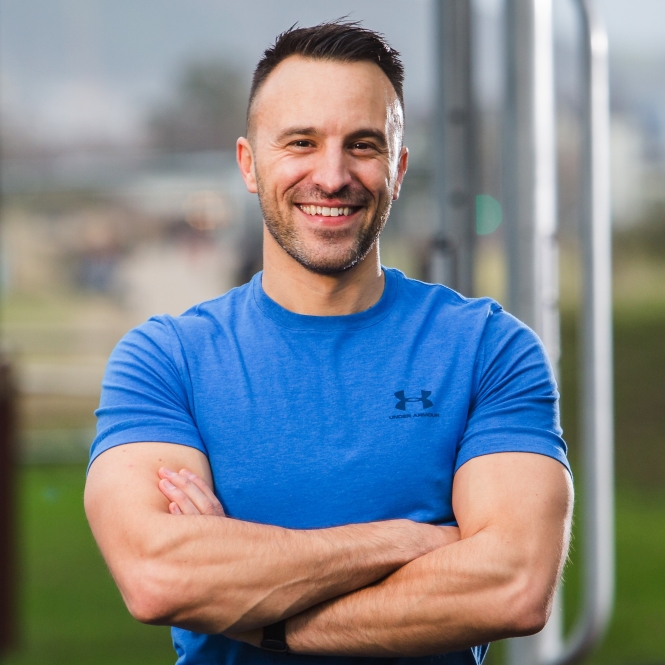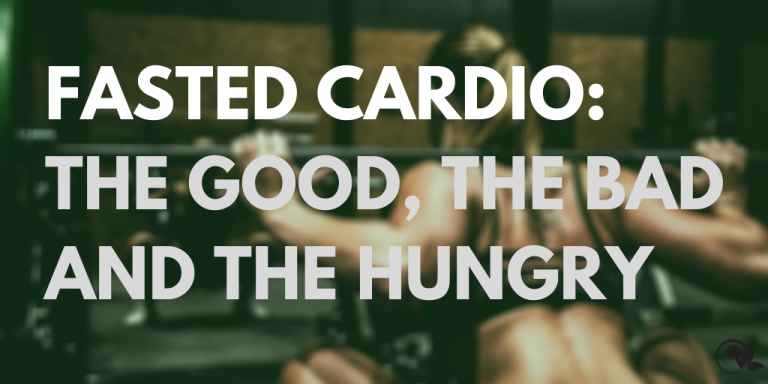As athletes, we can all appreciate the feeling of starting our training session well-fed, fully-caffeinated, and raring to go. Equally, we probably know the feeling of rushing to the gym for an early-morning session with an empty belly, chronic lethargy, and even a little bit of dread.
Training fasted – without eating first – is a hotly-debated topic in fitness circles. Some people swear by it, while others swear at the very mention of it!
Fasted cardio can be performed any time your body is in a fasted state, usually having not eaten anything for between 8 to 12 hours. Traditionally, fasted cardio is performed early in the morning before breakfast.

As with many things in the world of fitness, the goal of fasted cardio is to accelerate fat loss – and who wouldn’t want to do that?
If fasted cardio intrigues you, the good news is that it does increase fat oxidation. Well established in scientific research1, performing low-to-moderate aerobic training in a fasted state is associated with “a significant increase in fat oxidation during exercise” when compared to training in a fed state.
With less glycogen in your body, cortisol levels raise and stored fat is mobilized, forced into action as a fuel source. In short, this means that fasted cardio actually works.
But not so fast! Before you skip your pre-workout oatmeal, you should weigh up the drawbacks of fasted cardio, of which there are several.
Firstly, elevating levels of the stress hormone cortisol isn’t something athletes will want to do that often. Cortisol can increase the breakdown of muscle tissue for fuel while decreasing protein synthesis. In other words, cortisol can make you lose muscle while preventing new muscle from being built. We don’t want to speak for you, but this is usually the opposite of what most athletes strive towards.
Increased cortisol can also slow metabolism until you eat. This means that overall calories lost during that early morning session will be reduced until you eat breakfast.
Luckily, we don’t have to theorize about the actual, real-life effect of fasted cardio. This concept has actually been put to the test by several studies and, ultimately, while fasted cardio does lead to a higher fat oxidation, it does not lead to an increased net loss 2 3 4.
You may lose a little more fat during your fasted session but this effect is trivial and your body will find a way of making it even more insignificant throughout the rest of the day.
Add to that the fact that you also have to endure training with reduced energy, which often results in an overall shorter and less productive session.

Suddenly fasted cardio isn’t sounding so hot!
Just like fat-loss teas, diet pills and even taking the stairs instead of the elevator, these kinds of hacks have too little impact to really make a difference.
What actually matters and works for consistent fat loss is the ability to stick to a consistent calorie deficit by performing a structured fat-cut.
Planning and executing a proper cut may not be as tempting as potential quick fixes like fasted cardio but it will make a significant difference to your body. This is why we prescribe this method to vegan athletes wanting to get in shape.
To cut properly #
So how do you cut fat without relying on hacks and tricks? It’s simple! (Not to be confused with easy, though.)
First you take aim, then you establish a route, and finally you stick to that until you’ve reached your goal. Let’s break that down.
1) Decide how fast you want to go #
Are you looking to lose some excess fat over the next few months, or get shredded for a vacation in three weeks? This will determine how fast and how aggressive your cut should be.
We recommend aiming for about -0.5% bodyweight per week.
2) Determine your calorie target #
Estimate your TDEE and subtract calories according to velocity
To know how many calories you need to cut from your diet, you must first know how many calories your body needs to maintain the same weight. This is your Total Daily Energy Expenditure (TDEE), which can be figured out by using our TDEE calculator.
This number will be your calorie balance for rest days. If you train or significantly move in other ways through the day, add this amount to the TDEE. For example, if your rest-day TDEE is 2,500 calories and you perform a conditioning circuits class that burns 550 calories, your total TDEE for that day will be 3,050 calories.
This is not an exact science and accurately predicting how many calories you lose through a certain activity is tricky but this will give you a good idea of how much energy you need to maintain your current weight.
When you have your TDEE nailed down, subtract calories according to how fast you want to lose weight. Aiming for between -300 and -500 cal a day is a good start.
Track your food #
Good news – you don’t have to track every calorie to lose weight. Bad news – you probably do have to track your calories for a period of time to get an idea of how much you actually consume.
A week is a great start as it will give you an idea of how many calories are in your weekday breakfasts, your post-workout smoothies, and your Saturday evening seitan wings and beers (hey, we are all human).
Try to be as precise as you can for the week of recording, as you will see things you may otherwise miss. Everything that goes into your mouth has a calorie and little things soon add up, whether that’s a few spoons of vegan mayonnaise or a forgotten slice of birthday cake.
Of course, if you like this way of working, record your calories for longer and you will end up with more reliable results.
Course-correct over time #
It is important to weigh yourself every day to understand where you are in your weight loss plan. Aim to weigh yourself at the same time every morning before breakfast for consistency.
Of course, daily weight will vary a lot due to many factors, so don’t dwell on your daily number. Instead, work out your weekly average weight every Sunday and compare it week to week. You will soon see whether or not your cut is working as planned.
If you don’t see the results you want on the scale or in the mirror, tweak your daily deficit by a further 300 calories. Be aware that as you lose weight, your TDEE will reduce, so adjust your calories accordingly.
By following a properly planned cut, you will see significant weight loss over time, providing you are accurate with your calorie recording and keep things consistent.
It also means you will be able to smash your early-morning session having properly fueled up beforehand, leaving the others in the dust!
- Effects of aerobic exercise performed in fasted v. fed state on fat and carbohydrate metabolism in adults: a systematic review and meta-analysis↩
- Body composition changes associated with fasted versus non-fasted aerobic exercise↩
- Interval training in the fed or fasted state improves body composition and muscle oxidative capacity in overweight women↩
- Effect of Overnight Fasted Exercise on Weight Loss and Body Composition: A Systematic Review and Meta-Analysis↩


